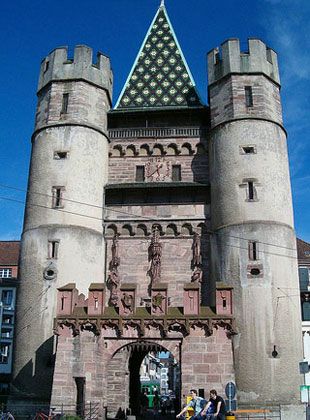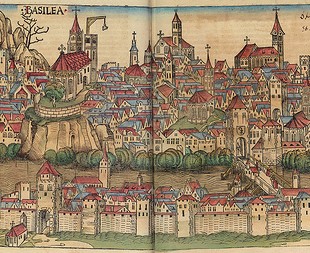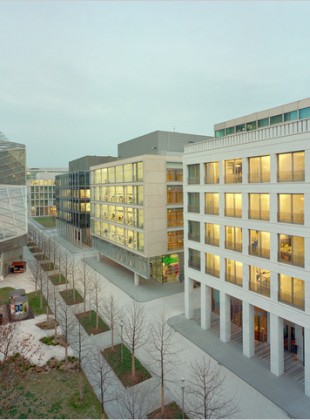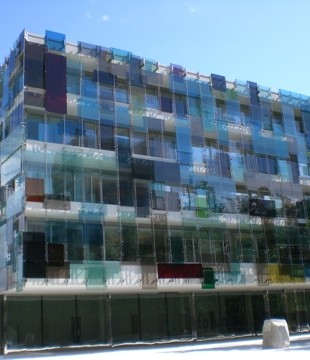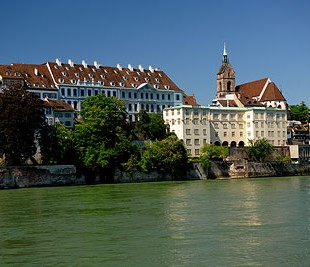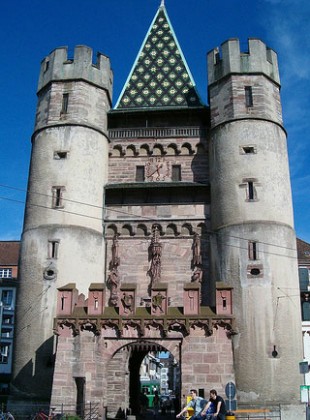“Many Hands, One Vision” trumpets Nicolai Ouroussoff in his review of the Novartis campus in Basel, Switzerland. One wonders whether the vision was worth having. The head of the pharmaceutical admits that “many of the workers don’t like it.” Well, if the New York Times won’t speak truth to power on behalf of the worker, I will.
This is Basel, a charming town on the Rhine, with roots reaching back to antiquity and still not much scarred with progress.

It flourished as an imperial cathedral city in the middle ages, and has the German Romanesque and Gothic patrimony to prove it. In the 15th century, the Rhine started its inexorable flow into the Tiber with the unfortunate Council convoked by Martin V. One of the few happy by-products of that council was the founding of the University of Basel in 1459, which might have served as a model for Novartis. Says Ouroussoff of the new campus: “Every square inch, in essence, would be designed to encourage the flow of ideas.” Just like a university.
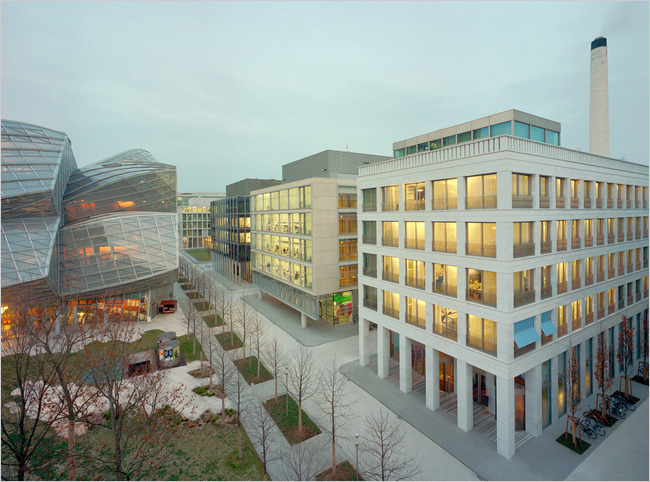
But to your correspondent this seems about as intellectually stimulating as an isolation room at Bellevue. And placeless to boot. There’s no hint here that we’re in Basel. Built on a relentless grid and isolated from the rest of the city, the buildings are either rationalistic and dead, like those on the right in the above photo, or irrational and dead, like the building on the left–Gehry’s predictable variation on a theme started at the IAC building. He drops other lines such as the following without irony:
The mismatched panels, suspended from steel rods and colored in different shades of blue, green and yellow, transform the entire building into an enormous cathedral window.
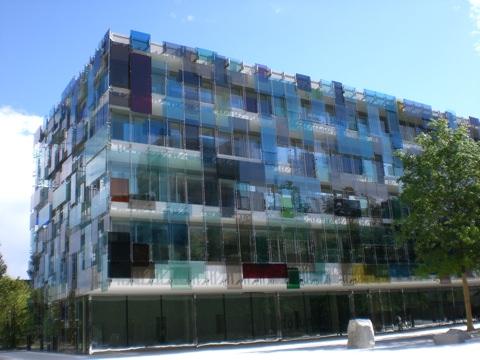
A cathedral window this neo-De Stijl pastiche is not. After a glowing description of the lobby, he says:
These architectural elements are a way of humanizing the conventional glass box.
In fact they do no such thing. This architecture is founded on a misunderstanding of the nature of man and the nature of the universe. Man is composed of both head and heart. But the fact that his head likes straight lines and clear arguments does not make him a machine. And the fact that his heart moves him in ways his head cannot does not make him an irrational creature. Likewise the universe follows patterns and moves according to certain rules, yet it is not a machine either. Unlike a true machine, e.g., the internal combustion engine, it remains mysterious and will forever be so. Life is its greatest mystery. As the scientists at Novartis should know, we can advance in our understanding of the universe, yet be sure that we will never exhaust the subject.
The campus is especially disappointing considering Novartis’s stated goal: “to prevent and cure diseases, to ease suffering and to enhance the quality of life.”With a properly built campus, it could have done even more to enhance quality of life, and without having to spend an extra Euro. Streets integrated with the historic urban fabric and proportioned to the pedestrian, proper wall to window ratio, variety in massing, and an architectural hierarchy coherent with that of the city–all easily attainable and conducive to the building up of Basel’s patrimony. And what a potential for iconography there! One can imagine all sorts of ornaments and details which would be perfectly appropriate for an institution of this stature: from medicinal flowers and leaves, to medical equipment, to the faces of important scientists for whose contributions over the centuries humanity is indebted, from Hippocrates on.
The old university, in stark contrast to Novartis, is totally human. Fully integrated into the life of the city, it truly edifies Basel in every way. It picks up the received architectural tradition, tends to it carefully, and hands it down renewed. The response to the existing urban fabric is sensitive, and the architecture is suitably monumental if a little austere.

Basel has such a rich history to draw upon and an extensive iconographic palette to work with. It’s a pity it was ignored in favor of a hundred-year-old obsession with an antiseptic machine aesthetic. Now Basel looks a little more like everyplace and no place. What a missed opportunity for Novartis.
Tags: architecture, ouroussoff

